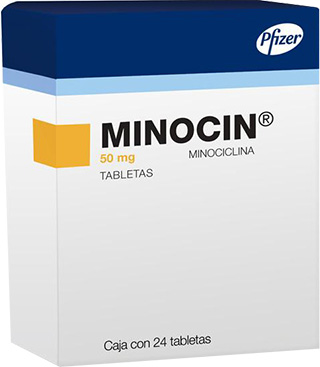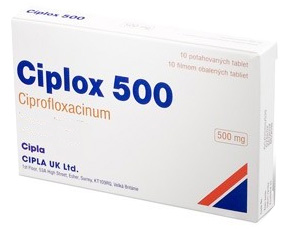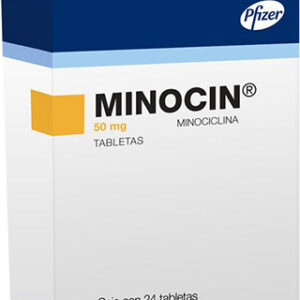Overview
Minocin, the brand name for minocycline hydrochloride, stands as a potent antibacterial agent belonging to the tetracycline class, designed to combat various bacterial infections. Its broad spectrum of activity encompasses numerous Gram-positive and Gram-negative microorganisms.
Indications
Minocin is indicated for the treatment of various infections caused by susceptible strains of bacteria. It is particularly effective against certain respiratory tract infections, urinary tract infections, skin and structure infections, as well as specific sexually transmitted infections. Additionally, it may be used in the management of acne and as part of the treatment regimen for rheumatoid arthritis.
Dosage Information
Dosage must be individualized based on the infection type, severity, and patient’s physiological condition. Standard doses range from 100 to 200 mg initially, followed by maintenance doses of 50 to 100 mg, with intervals determined by the response to therapy. It is crucial to continue the treatment course for the duration prescribed to prevent the resurgence of infection.
Administration
Minocin may be administered orally with or without food. If gastrointestinal discomfort occurs, taking it alongside meals may ease symptoms. It is not advisable to take the medication with dairy products or antacids, as these may interfere with absorption.
Contraindications
Minocin should not be used in persons with known hypersensitivity to minocycline or other tetracyclines. Use is also contraindicated in those with a history of lupus, liver impairment, and in children under eight years of age due to the potential risk of teeth discoloration and enamel hypoplasia.
Precautions
Precautions should be observed in patients with renal impairment, as minocycline can accumulate in such cases leading to potential toxicity. Long-term use requires consideration of potential hepatic side effects and periodic laboratory monitoring. Sun exposure should be minimized as Minocin can heighten the risk of photosensitivity.
Interactions
Minocin may interact with several substances, including anticoagulants, birth control pills, penicillins, and isotretinoin. Concurrent use with retinoids or other hepatotoxic drugs should be undertaken with caution. It is recommended to avoid concurrent use of acitretin or systemic retinoids.
Adverse Reactions
Adverse reactions to Minocin may include gastrointestinal disturbances, dizziness, vertigo, and dermatological reactions including photosensitivity. Rare but severe reactions such as hypersensitivity syndrome, autoimmune disorders, and pseudotumor cerebri have been reported. Any unexpected symptom should prompt immediate medical consultation.
Monitoring and Laboratory Testing
During extended therapy, periodic laboratory evaluations of organ systems, including hematopoietic, renal, and hepatic studies, are advisable. Monitoring serum levels of the drug may also be beneficial for managing potential toxicities in patients with renal impairment.
Overdose
In cases of acute overdose, gastric lavage or the administration of activated charcoal to absorb the drug is recommended. Symptomatic and supportive treatment should be provided, with a close watch on vital functions and urinary output. Dialysis does not effectively remove minocycline from the body.
Pregnancy and Lactation
Minocin is categorized as a pregnancy risk category D drug, denoting a risk to the fetus. Pregnant women should avoid its use unless clearly needed. Minocycline is also excreted in breast milk and could pose a risk to the breastfed infant, hence caution is advised.
Pediatric Use
The use of Minocin in children under eight years may lead to permanent discoloration of teeth and should be avoided. Dosage in pediatric patients must be carefully calibrated to body weight and the nature of the infection.
Geriatric Use
Though no specific geriatric issues have been identified, this population may be more susceptible to dose-related adverse effects. Hence, monitoring renal function and dosing cautiously, typically at the lower end of the dosing range, is suggested.
Pharmacology
Minocin operates by impeding protein synthesis in susceptible bacteria, thereby obstructing bacterial growth. It possesses anti-inflammatory properties, which contribute to its effectiveness in conditions such as acne and rheumatoid arthritis.
Pharmacokinetics
Absorption of minocycline is rapid and high after oral administration. It is extensively distributed in body tissues and fluids, and it is metabolized in the liver, with most of it being excreted in urine and bile. The drug has an elimination half-life that allows for less frequent dosing compared to other tetracyclines.
Storage and Handling
Store Minocin at room temperature away from excessive heat and moisture. Keep out of reach of children. The drug should not be disposed of via wastewater or household waste; proper disposal measures should be adhered to.
Patient Counseling Information
Patients should be counseled to complete the full course of therapy, even if they feel better before the course is finished. They should be instructed to report any severe or unusual symptoms, especially those indicative of hypersensitivity or central nervous system effects.
Medication Guide
Minocin comes with a medication guide that patients should be urged to read. This guide contains vital information about the indications, proper usage, precautions, and potential adverse effects of the medication, enhancing the patient’s understanding and compliance with the treatment regimen.






Reviews
There are no reviews yet.